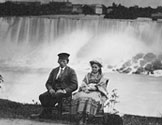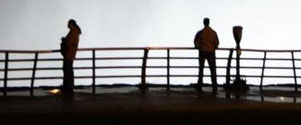

|
||||||||||||||||||||||||||||||||||||||||||
|
| ||||||||||||||||||||||||||||||||||||||||||
 |
 |
 |
 |
 “Eighteen Hundred and Froze to Death”: The Year Without A Summer Some winters just don’t want to go away and 1816 was one of those. The 1815 -1816 winter in the northeastern United States was milder and dryer than usual. As spring approached however, the weather turned colder and frosts were widespread. Farmers anticipating planting crops were frustrated throughout April and May. By the first week of June milder weather had returned and farmers rushed to get their crops sown. The relief was short-lived. On June 6th a storm brought freezing temperatures and snow. Crops planted only a week earlier were lost to frost. A few days later, milder weather returned for the rest of the month. Again crops were planted in the hope that the frosts were over. This was not to be. Cold weather and frost returned again in July. With temperatures in the 40s during the day, people began to worry about famine. Crop losses affected not only humans but livestock as well. Another warm spell in later July allayed fears but by August 6th, another round of winter weather arrived. What vegetation had survived the previous episodes was now destroyed. Once again another warm period followed but it was too little, too late. A killing frost came in late September, two weeks before usual. Then the winter started again. Repercussions of what people called “eighteen hundred and froze to death” were widespread. The overall harvest was half of what it normally should be and only half was edible, leaving people and livestock only a quarter of the crop yield to consume. Crop prices rose while livestock prices dropped as farmers sold off livestock they could not feed. The prices remained in this pattern throughout 1817 and did not return to normal until after 1820. The opening of short sections of the Erie Canal helped stabilize prices. By the 1820s prosperity had returned to the area. In 1816 Western New York was still very much a wilderness. Most of the information on that summer comes from accounts in New England newspapers and correspondence. However, in the 1849 “History of the Holland Land Purchase,” Oramus Turner wrote of Western New York, “In 1816 and 1817, the seasons were unpropitious (unfavorable)…after a long period of gloom and depression, struggling against formidable difficulties, the courage of the new settlers was revived.” What caused the summer of 1816 to be so unusual? At the time there was much speculation about why the skies were wreaking havoc. It was later determined that volcanic eruptions in Indonesia between 1812 and 1815 spewed so much dust into the atmosphere that it affected weather conditions for several years around the world. The eruption of Tambora in 1815 is believed to be the worst ever recorded in human history resulting in that memorable year without a summer. Douglas Farley, Director Ann Marie Linnabery Erie Canal Discover Center 24 Church St. Lockport NY 14094 716.439.0431 CanalDiscovery@aol.com www.NiagaraHistory.org |